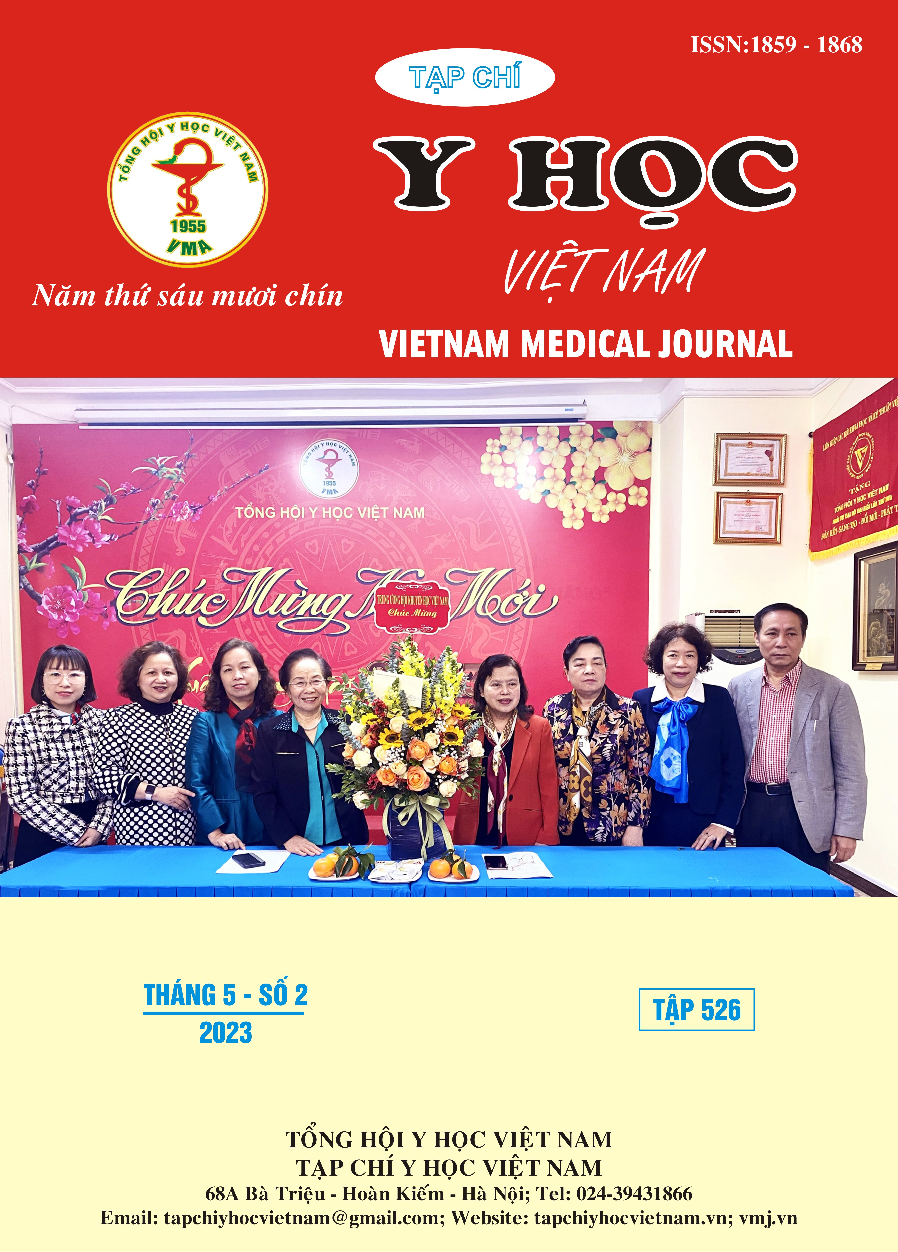HORMONAL DRUGS ASSISTING REPRODUCTION IN INVITRO FERTILIZATION AT TU DU HOSPITAL
Main Article Content
Abstract
Objectives: The aim of this study was to investigate the drug use pattern of hormonal drugs and the treatment outcomes of in vitro fertilization (IVF). Methods: A cross-sectional descriptive study was carried out on outpatients’ medical records with IVF at the Fertility Support Unit, Department of Infertility, Tu Du Hospital from October 2020 to March 2021. Baseline characteristics of patients, the use of hormonal drugs, the treatment results and the factors related to the response to infertility treatment (number of oocytes aspirated after ovarian stimulation and the clinical pregnancy rate) with the method of in vitro fertilization were investigated. Results: 127 medical records were included in this study. The median age of patients was 31 (28-34). Primary infertility was accounted for 70.9% and infertility caused by husband was 58,3%. Median AMH index was 3.21 (2.38-4.75) ng/ml and AFC index was 15 (11- 22) follicles. During the ovarian stimulation phase, the most commonly prescribed gonadotropins were rFSH + hMG (56.7%), rFSH + hMG (22%). The median duration of ovarian stimulation was 11 (10-11) days. In the ovulatory period, rhCG and GnRH agonists used were 81.1%, 18.9%, respectively. During endometrial preparation, oral estradiol accounted for 100% and vaginal progesterone accounted for 87.4%. The median number of oocytes aspirated was 14 (11-18). Age (β = - 0.296; p = 0.03), AMH index (β = 1.246; p < 0.001), AFC index (β = 0.441; p < 0.001) and estradiol concentration on the day of initiation of oocyte maturation (β = 0.001; p < 0.001) were associated with the number of aspirated oocytes. The clinical pregnancy rate was 25.2%. Type 1 embryo transfer (OR = 5.07; p = 0.034) was associated with higher clinical pregnancy rate. Conclusion: It is necessary to optimize the quality of embryos by technical measures and the use of drugs to increase the success rate of IVF.
Article Details
Keywords
Endocrine drugs, gonadotropins, in vitro fertilization, aspirated oocytes, clinical pregnancy.
References
2. Kahyaoğlu S, Yılmaz B, Işık AZ. Pharmacokinetic, pharmacodynamic, and clinical aspects of ovulation induction agents: A review of the literature. Journal of the Turkish German Gynecological Association. 2017;18(1):48-55. doi:10.4274/jtgga.2016.0107
3. Mochtar MH, Danhof NA, Ayeleke RO, Van der Veen F, van Wely M. Recombinant luteinizing hormone (rLH) and recombinant follicle stimulating hormone (rFSH) for ovarian stimulation in IVF/ICSI cycles. The Cochrane database of systematic reviews. 2017;5(5): Cd005070.doi:10.1002/14651858.CD005070.pub3
4. Stimulation T, Bosch E, Broer S, et al. ESHRE guideline: ovarian stimulation for IVF/ICSI†. Human reproduction open. 2020;2020:hoaa009. doi:10.1093/hropen/hoaa009
5. Nguyễn Thị Minh Khai. Đánh giá hiệu quả chuyển phôi trữ đông cho bệnh nhân thụ tinh ống nghiệm tại bệnh viện Phụ Sản Trung Ương giai đoạn 2012 - 2014. Luận án Tiến sĩ y học. Trường Đại học Y Hà Nội. 2017
6. Vương Thị Ngọc Lan. Giá trị các xét nghiệm AMH, FSH và AFC dự đoán đáp ứng buồng trứng trong thụ tinh ống nghiệm. Luận án tiến sĩ Y học. Đại học Y dược Thành phố Hồ Chí Minh. 2016.
7. Samara N, Reis D, Danielli Miller N, et al. What are the best predictors for successful GnRH antagonist protocol in in vitro fertilization (IVF) treatment? Gynecological endocrinology : the official journal of the International Society of Gynecological Endocrinology. 2015;31(11):877-9. doi:10.3109/09513590.2015.1081680


